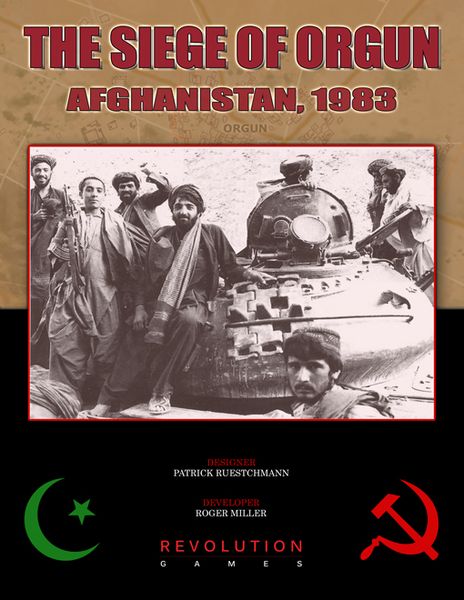The Siege of Orgun: Afghanistan, 1983 (2015) Board Game
The Siege of Orgun: Afghanistan, 1983 is a board game that simulates the events of a real-life military conflict that took place in the Orgun district of Afghanistan in in 2015. During this time, Afghan mujahideen fighters were engaged in battles with Soviet forces in an attempt to gain control of strategic territories in the region. The game captures the tension and strategic decisions made by both sides during this intense period of conflict.
Game Components of The Siege of Orgun: Afghanistan, 1983
How To Setup The Siege of Orgun: Afghanistan, 1983
To set up the game, each player places their initial units in designated areas. The DRA (Democratic Republic of Afghanistan) sets up first, followed by the Mujahideen. The DRA places units in areas such as 15, 19, and 32, including leaders, BTR-70s, T-55 tanks, and minefields. The Mujahideen set up in areas 36 and 41, with units like Wazri leaders, AK-47s, RPG-7s, and 107mm mortars. Each side has specific stacking limits and initial unit placements.
Gameplay Mechanics and Game Objective
Player Experience
The game is praised for its tense and engaging gameplay, particularly with two players. The asymmetric nature, aided by Event Cards, adds variety and challenge. Players appreciate the simple setup and low counter density, making it easy to get the game on the table. However, solo play is considered less engaging compared to two-player games.
Pros
Cons
Personal Thoughts on The Siege of Orgun: Afghanistan, 1983
This game is ideal for wargame enthusiasts and those interested in the Soviet-Afghan War. It offers a unique blend of strategy and historical context, making it a great addition to any wargamer’s collection. The game’s simplicity and asymmetric mechanics ensure that each playthrough is different and challenging. However, it may appeal less to casual gamers due to its specific historical and strategic focus.
We are supported by our audience. When you purchase through links on our site, we may earn an affiliate commission, at no extra cost for you. Learn more.

